
There are many destinations in south central and eastern Bhutan that often go unnoticed when it comes to promoting Bhutan. This community of Buli under Zhemgang in south central Bhutan is one of them.
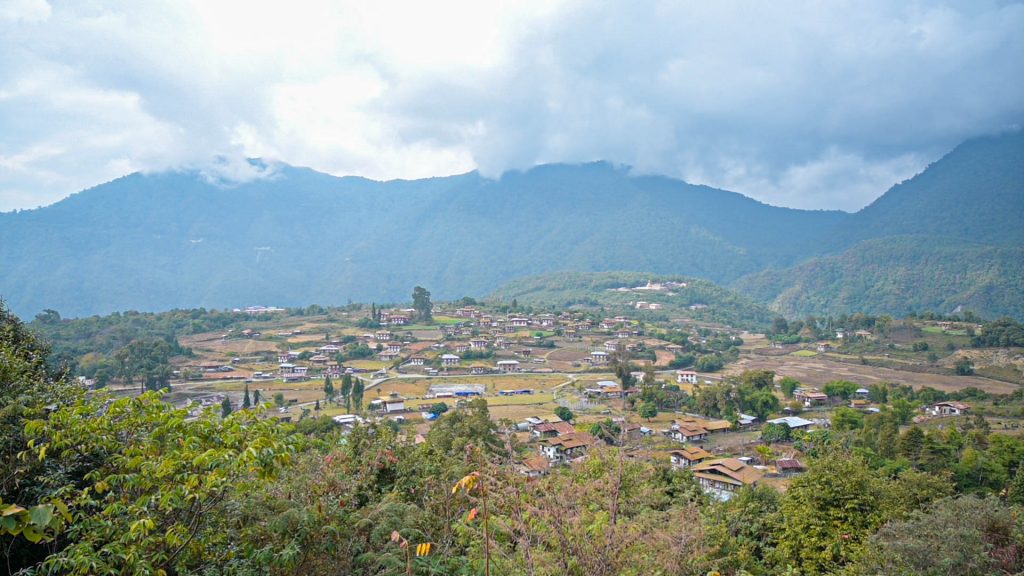
Enroute to Buli in Zhemgang, you’ll come across a small roadside restaurant in Dakphai decorated with flower pots tied on wooden planks at its entrance. This shop is run by 47 year old Lemo mostly known as “Aum Koka” in the area. How did she get that name you ask? .
It was just another day for Lemo in 2007 when her shop was suddenly graced by an unlikely visitor; His Majesty the King of Bhutan. “What do you sell in your shop?” enquired the King, to which the shy Lemo replied, “Tea & Koka la”.
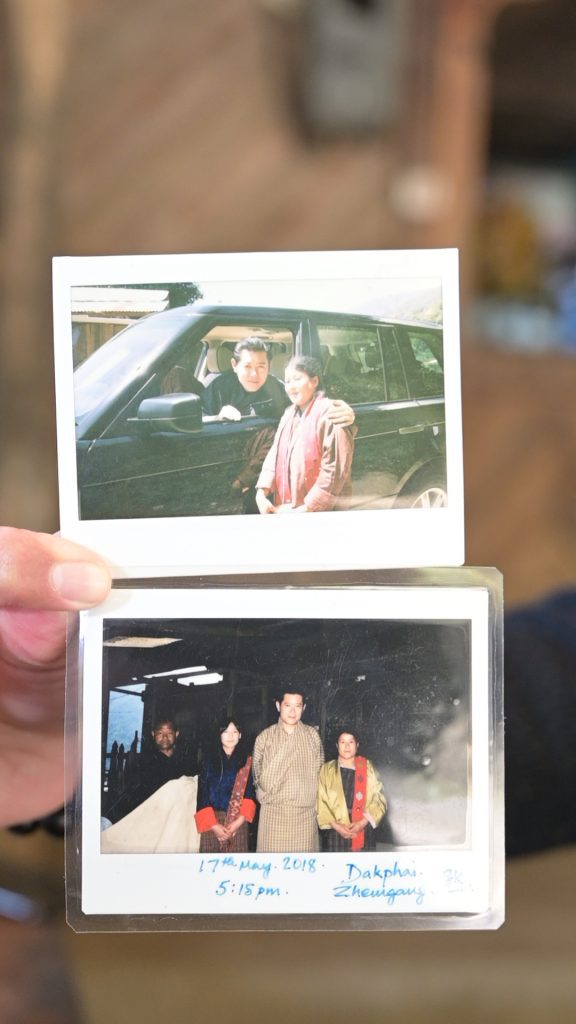
After that exchange, His Majesty named her Aum Koka. When we were in Zhemgang, we met people telling us to visit Aum Koka and when I got there and asked whether there was someone called Aum Koka, I will always remember the smiling woman coming to us and exclaiming, “Nga Ein La” (That’s me) She carried that name with so much happiness and pride. After the short interview, she ran inside to show us the photos with His Majesty and told us that it is because of HM’s blessings that her shop has been doing so well even after all these years and prays for The King to surprisingly walk into her small shop again one day. This is just the beginning as you make your way to Buli community.
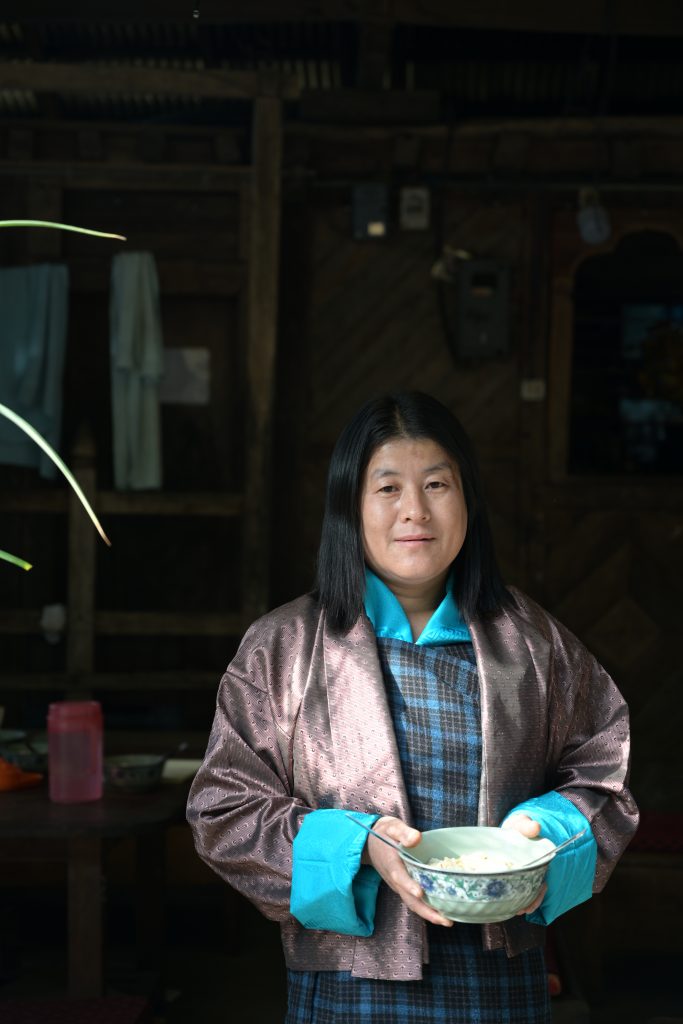
Buli, Nangkor, Zhemgang
I came to this quaint little village surrounded by mountains, like a rugged rim around a bowl, and at its base lay Buli on a plateau of a high mountain. I chose to visit this place after receiving recommendations in my ig inbox and when I found myself in Zhemgang I knew I couldn’t miss my chance. .
Buli is one of the 6 selected villages in Bhutan that is designated as a cultural site by the Department of Culture. This is in line with the need to preserve age old traditional hamlets and architecture that are fast-changing with modernization in Bhutan.
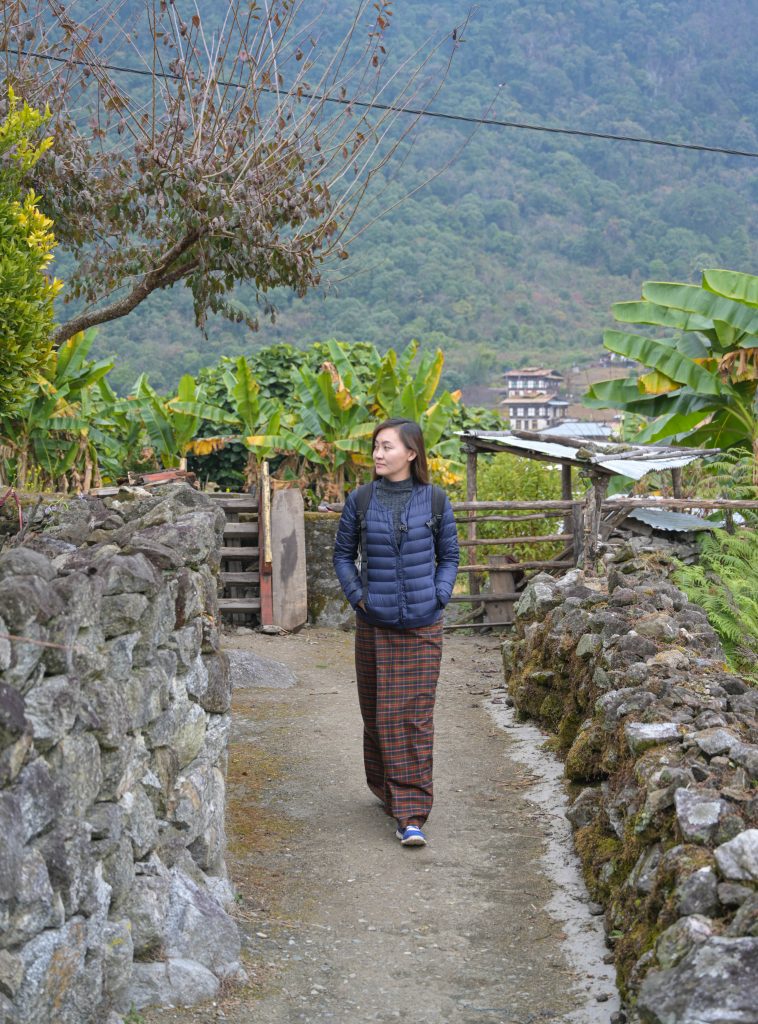
As you take a walk into the village, you’ll come across many ancient traditional structures that are more than a century old…each with a story. The earthy walls and wooden beams that in time have darkened with smoke fumes from the mud stove kitchens all take me to a different time. As I kept walking into the little pathway that took me around Buli, I thought all I was getting out of Buli was a heritage village tour but little did I realize the spectacular journey Buli was going to take me on.
But there’s more to Buli than just its architectural beauty. I’ll get to that shortly.
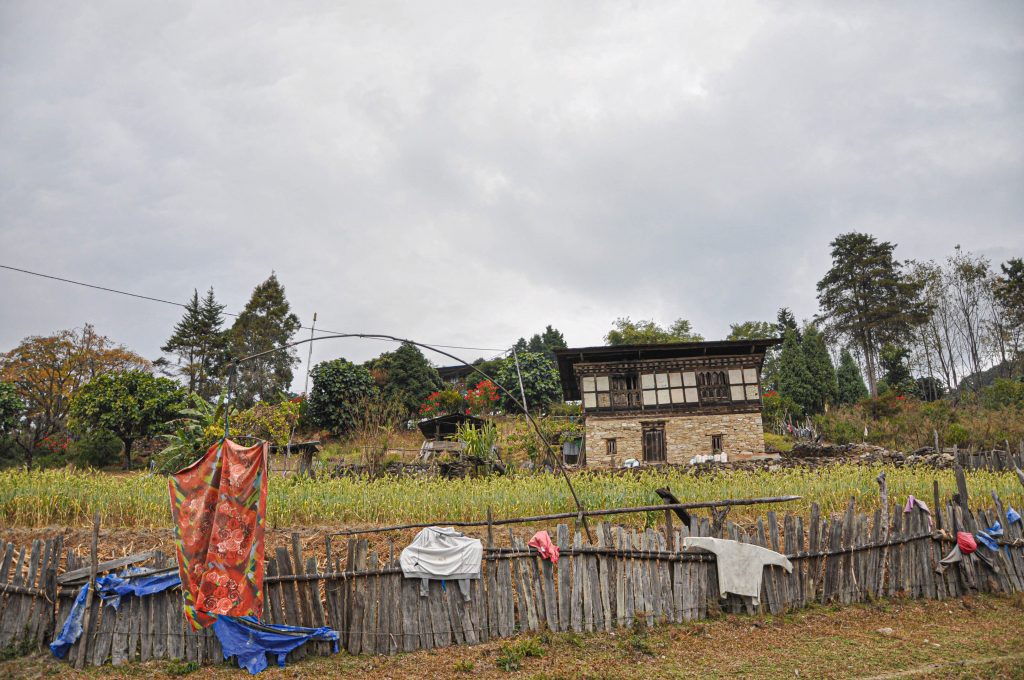
One of the best things about travelling is experiencing different kinds of accommodations. And I personally love traditional local homestays in Bhutan (especially the food) The Dzongkhag got us in touch with a local homestay in Buli village, Aum Tshering Eudon Homestay. Here’s a short tour. Rate: Nu. 650/- per night (includes breakfast & dinner)
Buli Tsho
If you’re in Buli, you MUST VISIT the sacred Buli Tsho (lake) which is deemed as the abode of the village’s protective deity Buli Muenmo or Tshomen (mermaid).
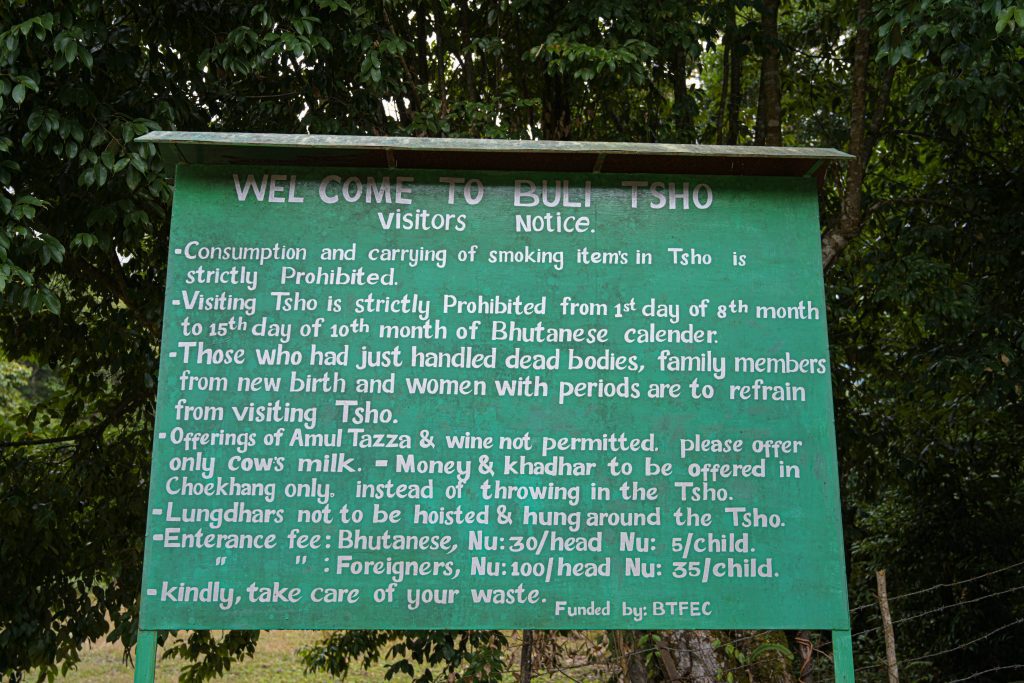
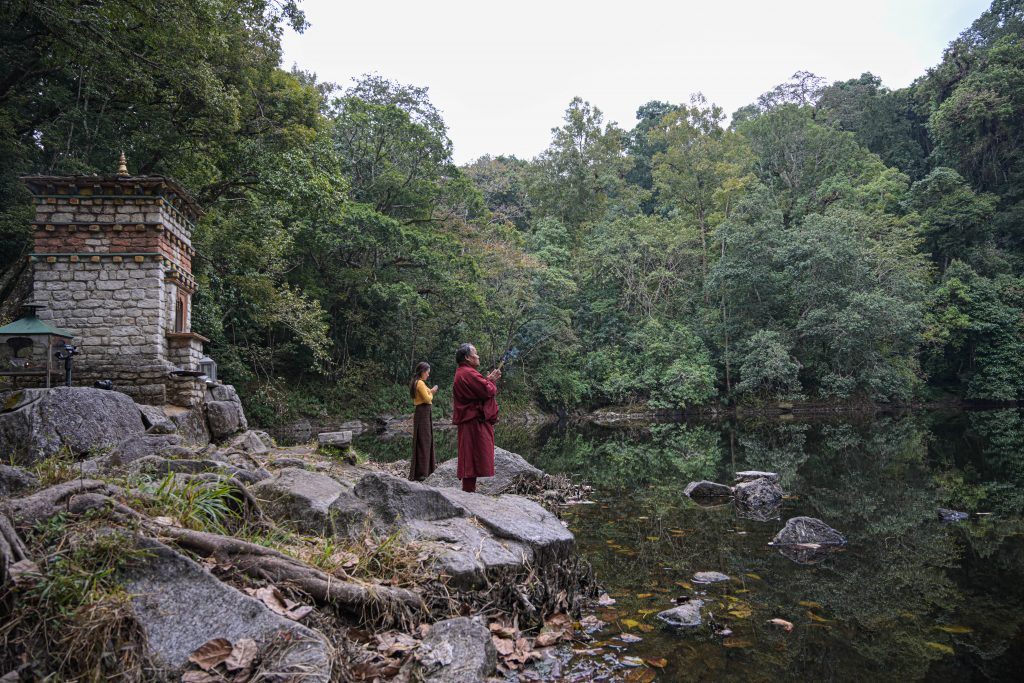
About a 20 minute drive southwest from the village, the rough road will take you deep into the forest where you’ll arrive at a small clearing. There, if you’re lucky, you’ll meet Pema Singye, the caretaker who will open the gate and guide you (if he’s not there, don’t worry, his number is on the gate). You’ll have to donate some money before you step inside the gate but be sure to read the instructions on the giant green board (you might not understand Pema Singye as he’s a bit hard of hearing and speaks only Khengkha.) Buli is a very sacred place so the people fear that visitors might desecrate the lake so be very mindful of their concern.
The people of Buli worship the Buli Muenmo as their protective deity. Around 2 times a year, the village dedicates an annual ritual called the Buli Chhodpa (offering) to appease and thank the deity for the community’s good fortune, health and prosperity. Did you know that during the 2 month harvest season, no visits are allowed as villagers fear that even the slightest bit of disturbance would affect the annual harvest. People who’ve had a death in their family, or handled a dead body, or physically ill and women on their periods are not allowed to visit the lake. Lopon Thokchung, our local guide in Buli, describes hearing loud thud noises coming from the lake whenever there were signs of disturbance. “Doonghi Dug Dug ke chabchab zumbey,” (like a beating heart)
As Pema Singye opens the locked gate, he hands us burning incense sticks as we slowly make our way towards the sacred lake.
Did you know that “Muenmo” means lake in Khengkha? As I walked closer to the sacred Buli Tsho (lake) I was instantly drawn to the glossy sheen of the water surface. The lake looked like a gigantic mirror reflecting the images of the dense forest that surrounded it like a protective wall. We immediately light a butter lamp and offer our prayers to the Tshomen.
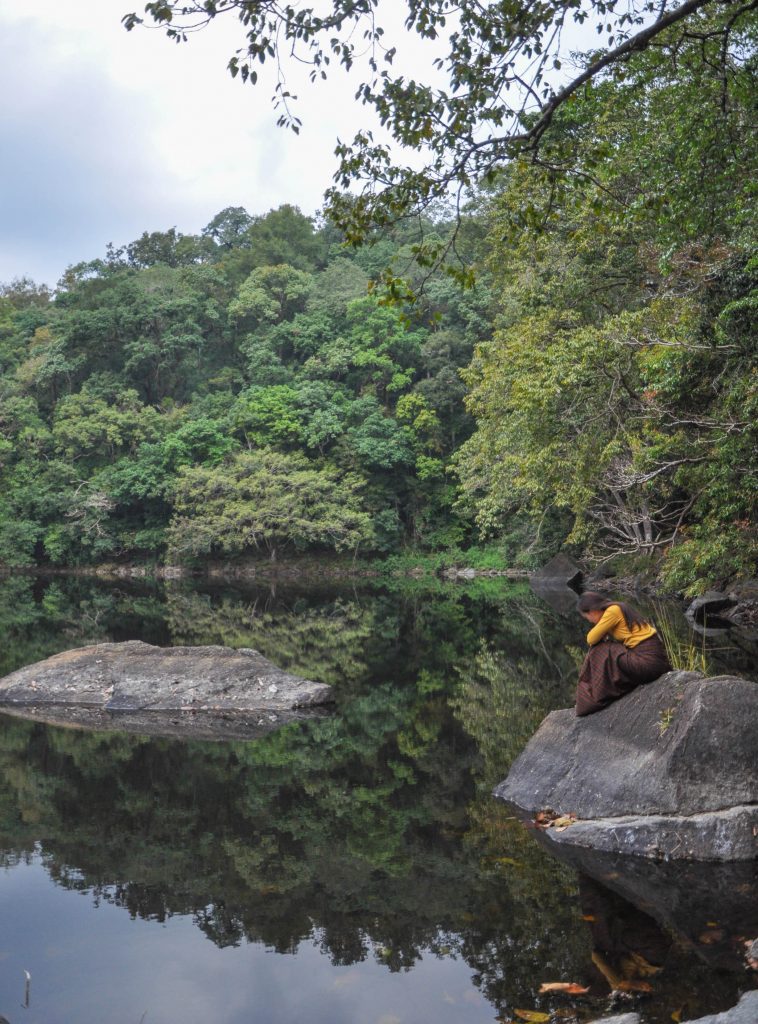
This story of the BULI Muenmo Tshomen (Mermaid)
Once upon a time 3 brothers from Tibet traveled to this region chasing a wild boar. When they reached the mountain top overlooking the flat plateau (on which Buli now stands) they saw the wild pig in the open field. Seeing this the brothers made an agreement that whoever succeeds in shooting the boar would take this place and rule as king. Surprisingly it was the youngest brother’s arrow that finally killed the pig, and he settled and ruled as the king of Baeyul (Hidden paradise now known as Buli) His name was Buli Penpa.
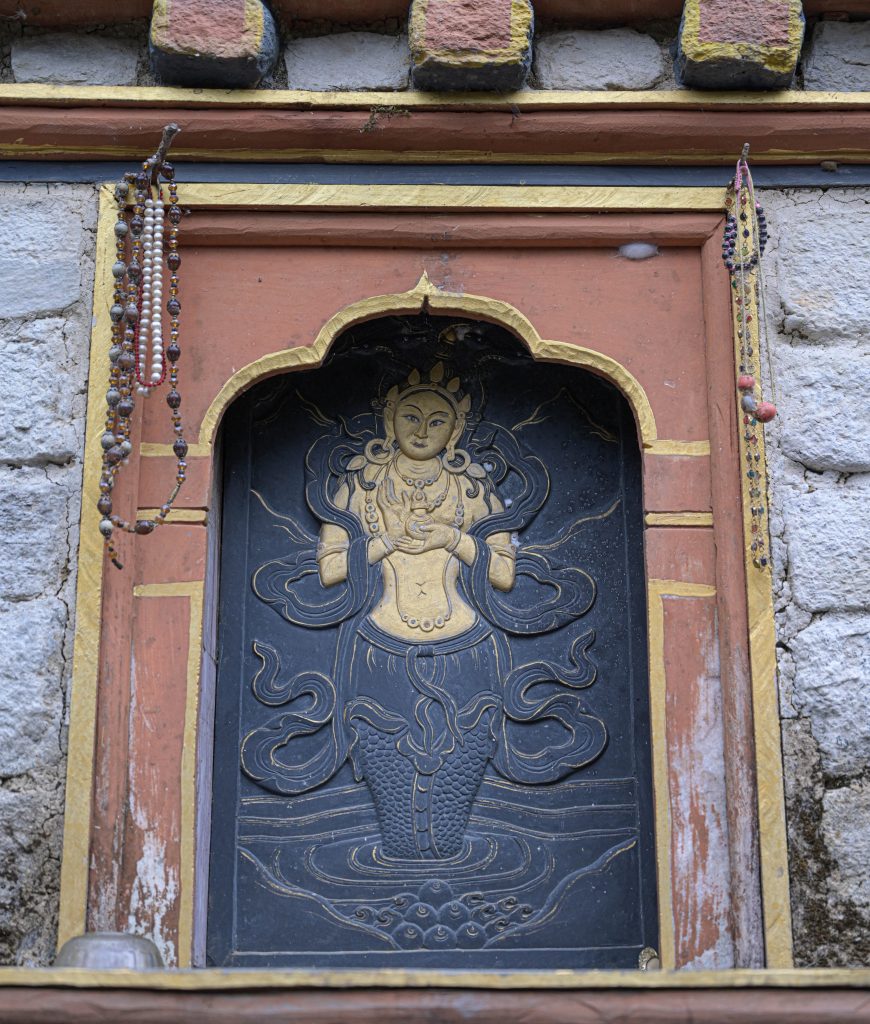
How is all this connected to the Tshomen? Well, the elders in the village share that the Tshomen was the youngest sister of the brothers who eventually came looking for her siblings in a supernatural form. They say that she even came to one of the houses one night to ask for shelter. That night the lady of the house heard strange noises coming from her room, and when she went to check on her guest, she saw a half-woman-half-snake form moving around the room. When she returned with her neighbors to see what the creature was, the Tshomen is said to have disappeared leaving a shiny gold milk churn/bucket for her host.
Many don’t know when this happened but the people of Buli are powerfully connected to this lore that is part of their ancient tradition. I saw the reverence and worship in the eyes of the narrators as they told me this story. And all I could think to myself was how I couldn’t have known earlier that such myths and legends still live in my country…not as stories but as an intrinsic part of people’s daily lives.
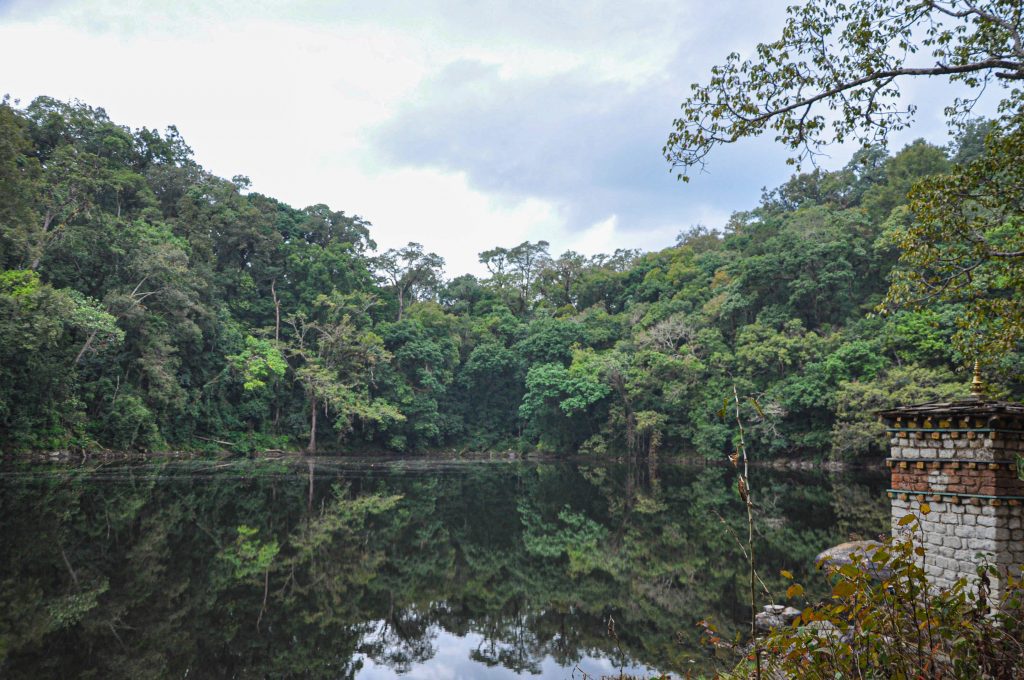
Something magical happened.
I was walking near these ancient houses in the village, when suddenly a peculiar one caught my eye. We wanted to shoot some interiors of the village houses but most of the people had already left for the celebration grounds.
We were about to go back when suddenly a woman stepped out onto the balcony. “Ama, nagi chhim pataba kemi ga la?” (Can we photograph your house), I asked. She was more than happy to welcome us but told us that she was embarrassed at how dilapidated her house was. But this place was a photographer’s dream. From the darkened smoky walls, to the cobs of corn hanging from the ceiling, I knew this was ideal for what I had in mind. She slowly took us to the altar room and began telling a story that blew my mind.
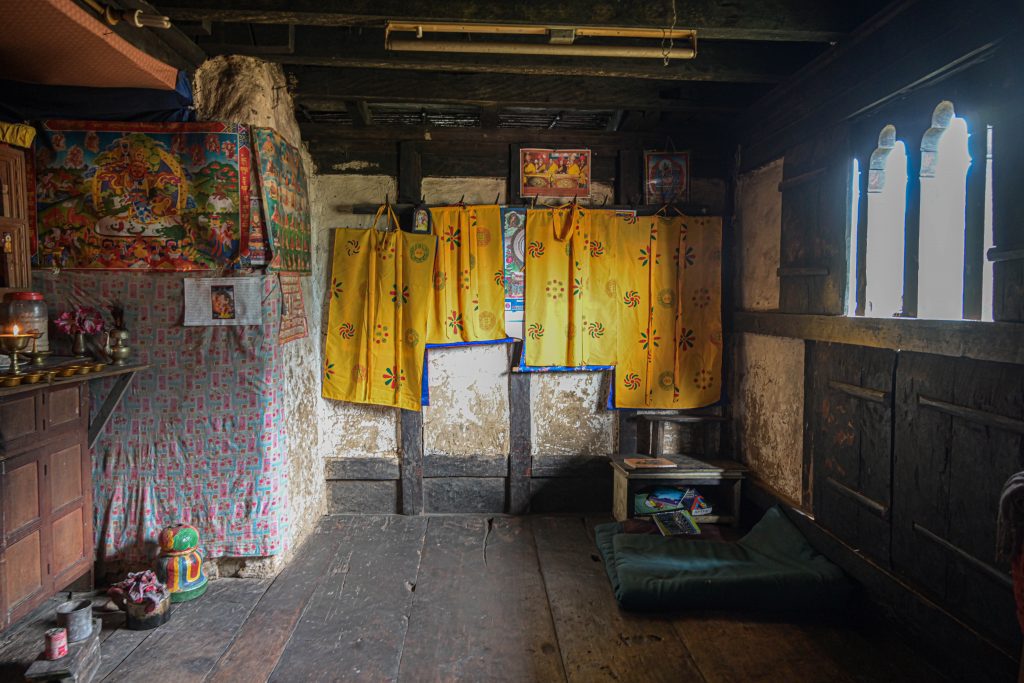
This house that we accidentally stumbled upon was THE house the Tshomen Kintu Zangmo had taken shelter in. “My ancestors were the ones who saw her true form,” says Aum Choney Zangmo. I could not believe how fortunate we were to have stepped inside and heard the tale from her side. She also says that now that the house is a cultural site, she cant even demolish it and construct a new one. Aum Choney’s family is also the main participant in the Chhodpa ceremony that offers food to the deity Tshomen of Buli.

Thank you Buli. This beautiful place has taken me on a journey unlike any other. It has brought me closer to the magic of mythology, folktales and lore.But most importantly it brought me back to the stories of mermaids and mythical creatures, that I loved and believed so deeply when I was little, but had locked away because I was told that I had to “grow up.” I pray that these traditions never fade away and never be dissipated by the cloak of skepticism that we all wear too proudly these days.
And I also pray that your little self finds your childhood tales one day.